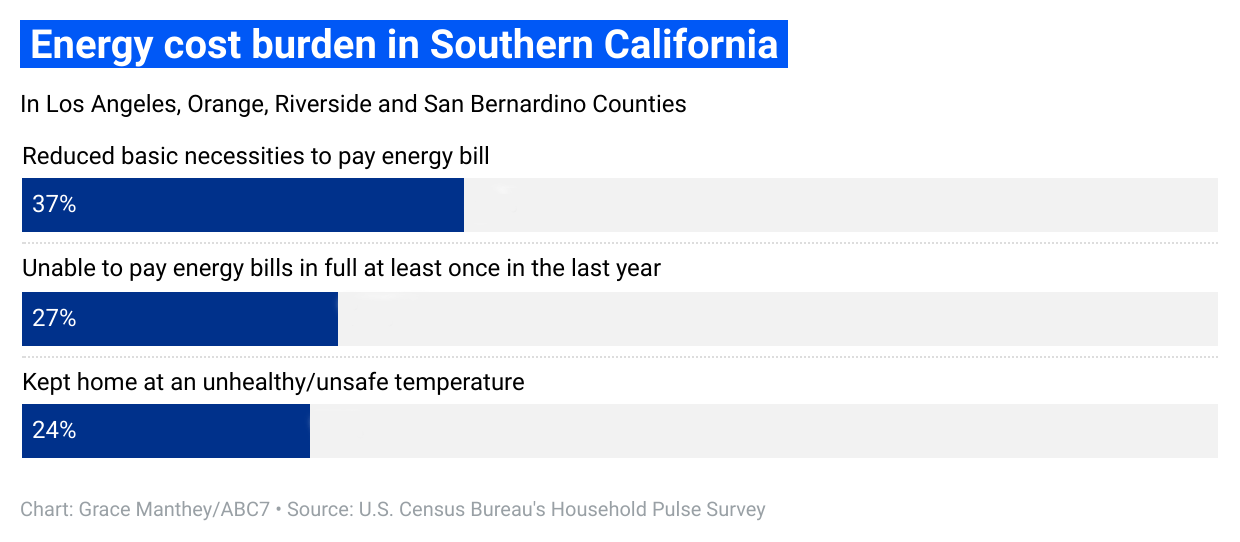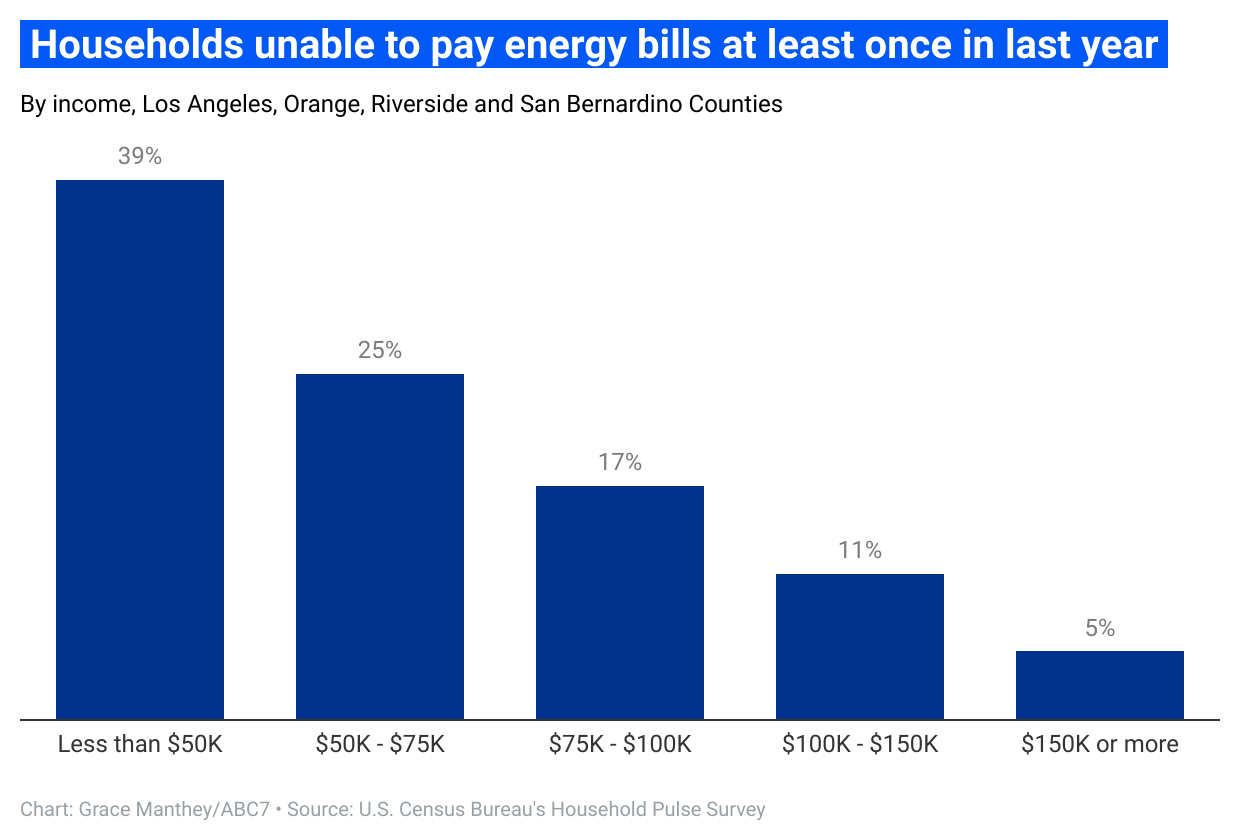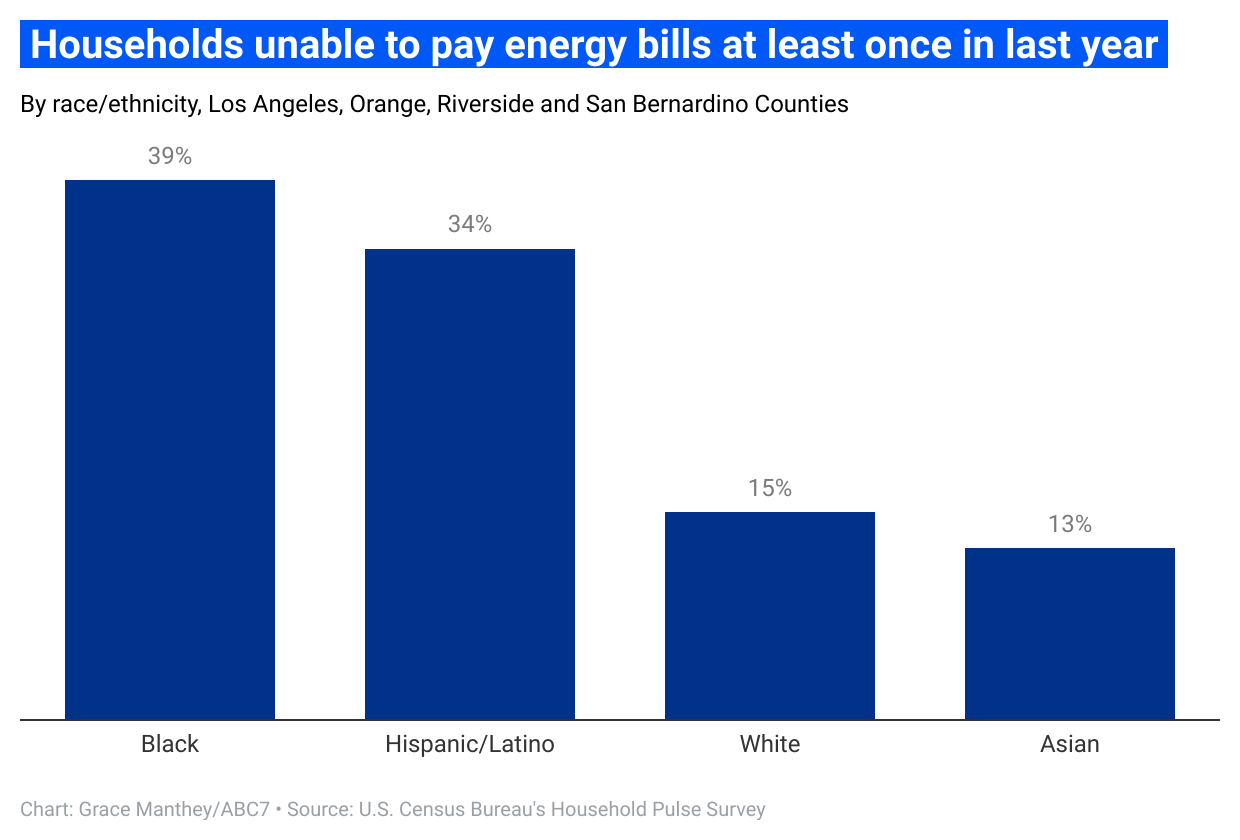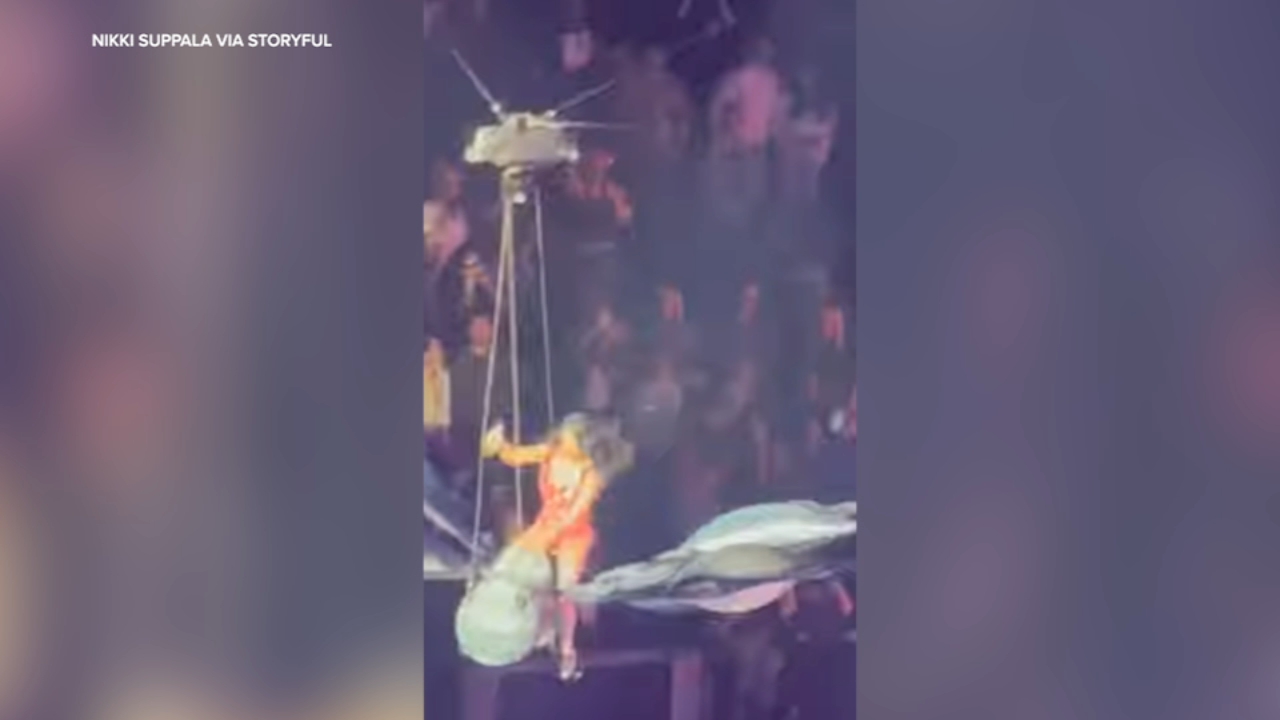More than one in four SoCal families are unable to pay energy bills. Heat waves may make it worse
During the early September heat wave, SoCal electricity prices rose to more than double prices in August, federal numbers show.
LOS ANGELES (KABC) -- With temperatures climbing yet again this week, the power grid isn't the only thing strained.
According to an ABC7 analysis of the most recent data from the U.S. Census Bureau's Household Pulse Survey, more than a third of families in Los Angeles, Orange, Riverside and San Bernardino counties had to reduce basic necessities, such as food or medicine, to pay an energy bill.
More than a quarter were unable to pay their energy bills in full at least once in the last year, and 24% kept their home at what they felt was an unhealthy or unsafe temperature.

Omar Lara, a nursing student at Los Angeles Community College is one of those people struggling to pay utility bills.
"We just pay a little bit at a time and you know, just try to survive," Lara said.
The classroom is his cooling center, but the journey to and from it is far from cool.
"You just hop on the first bus you can find and just try to get out of the heat," he said.
People who need help have resources. United Way of Greater Los Angeles works with SoCalGas and Southern California Edison to aid those who need help. The Los Angeles Department of Water and Power also has financial assistance programs.
Historically, those most affected are low-income households and Black and Latino families.
About 39% of families making less than $50,000, for example, were unable to pay their energy bills in full at least once in the past year, compared to just 5% of families making $150,000 or more.

Roughly 39% of Black families were unable to pay their energy bills in full at least once in the past year, for Hispanic/Latino families, it was 34%. For white and Asian families, it was 15% and 13%, respectively.

"We had the pandemic happen, people had job insecurity, job loss, housing insecurity, just a lot of things coming together," said Norma Rodriguez, one of the directors at United Way Greater Los Angeles.
"And so those folks are the most impacted now, as they're trying to... come back economically. Pair that with inflation, rising gas prices, it's a perfect storm for those communities," she said.
The heat wave also made things worse, according to Rodriguez.
During the last heat wave in early September, the state saw record-breaking demand.
But prices skyrocketed even more during that period, with weekly average on-peak wholesale electricity prices in Southern California more than double what they were for the month of August, according to federal data.
But price was only part of the issue.
For Omar Lara, "the power outages didn't help. Power went out a couple of times."
LA County public works will not shut off or stop services for customers unable to pay their bills, at least as of Sept. 27, 2022. But as a pandemic-era policy, it will not last forever.
Late last year, the California Public Utilities Commission authorized PG&E, SDG&E, SCE and SoCalGas to implement "Percentage of Income Payment Plan," or PIPP pilot programs which allow participants to pay an affordable percentage of their income toward electricity or natural gas bills.











